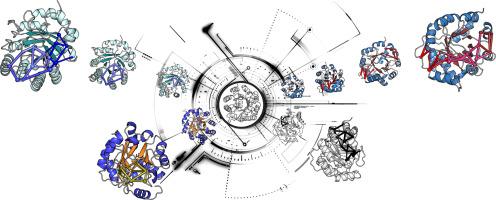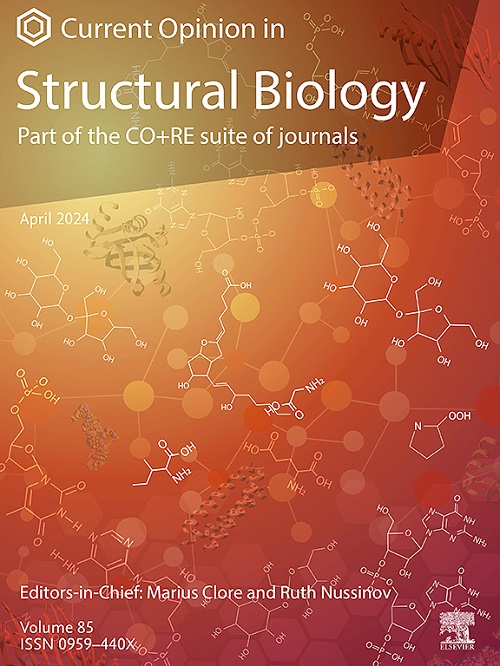利用残基相互作用网络了解蛋白质功能和进化,并设计新蛋白质
IF 6.1
2区 生物学
Q1 BIOCHEMISTRY & MOLECULAR BIOLOGY
引用次数: 0
摘要
残基相互作用网络(RIN)提供了蛋白质内部相互作用网络的图式表示,为深入了解驱动蛋白质结构、功能和稳定性关系的因素提供了重要依据。目前有多种工具可用于进行 RIN 分析,其中考虑到了不同类型的相互作用、输入(晶体结构、模拟轨迹、单个蛋白质或跨蛋白质比较分析)以及格式,包括独立软件、网络服务器和网络应用程序编程接口 (API)。尤其是使用 "元 RIN "对不同蛋白家族进行 RIN 比较分析的功能,为分析蛋白质进化提供了宝贵的工具。这反过来又突出了体外进化研究需要避免(或瞄准)的热点,提供了一个可用于设计新蛋白质的强大框架。本文章由计算机程序翻译,如有差异,请以英文原文为准。

Using residue interaction networks to understand protein function and evolution and to engineer new proteins
Residue interaction networks (RINs) provide graph-based representations of interaction networks within proteins, providing important insight into the factors driving protein structure, function, and stability relationships. There exists a wide range of tools with which to perform RIN analysis, taking into account different types of interactions, input (crystal structures, simulation trajectories, single proteins, or comparative analysis across proteins), as well as formats, including standalone software, web server, and a web application programming interface (API). In particular, the ability to perform comparative RIN analysis across protein families using “metaRINs” provides a valuable tool with which to dissect protein evolution. This, in turn, highlights hotspots to avoid (or target) for in vitro evolutionary studies, providing a powerful framework that can be exploited to engineer new proteins.
求助全文
通过发布文献求助,成功后即可免费获取论文全文。
去求助
来源期刊

Current opinion in structural biology
生物-生化与分子生物学
CiteScore
12.20
自引率
2.90%
发文量
179
审稿时长
6-12 weeks
期刊介绍:
Current Opinion in Structural Biology (COSB) aims to stimulate scientifically grounded, interdisciplinary, multi-scale debate and exchange of ideas. It contains polished, concise and timely reviews and opinions, with particular emphasis on those articles published in the past two years. In addition to describing recent trends, the authors are encouraged to give their subjective opinion of the topics discussed.
In COSB, we help the reader by providing in a systematic manner:
1. The views of experts on current advances in their field in a clear and readable form.
2. Evaluations of the most interesting papers, annotated by experts, from the great wealth of original publications.
[...]
The subject of Structural Biology is divided into twelve themed sections, each of which is reviewed once a year. Each issue contains two sections, and the amount of space devoted to each section is related to its importance.
-Folding and Binding-
Nucleic acids and their protein complexes-
Macromolecular Machines-
Theory and Simulation-
Sequences and Topology-
New constructs and expression of proteins-
Membranes-
Engineering and Design-
Carbohydrate-protein interactions and glycosylation-
Biophysical and molecular biological methods-
Multi-protein assemblies in signalling-
Catalysis and Regulation
 求助内容:
求助内容: 应助结果提醒方式:
应助结果提醒方式:


